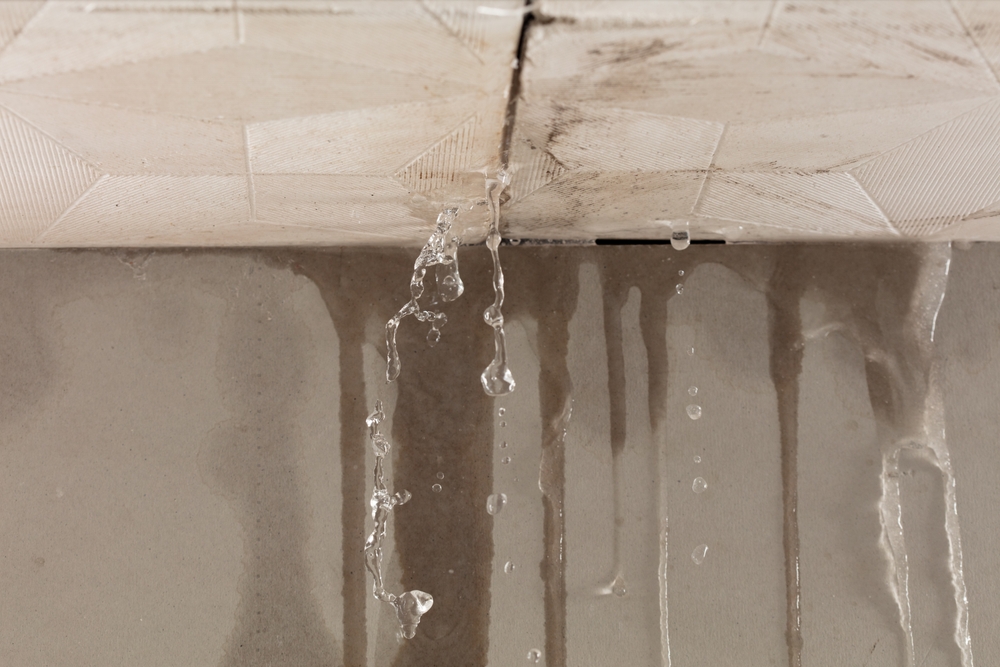Ever wondered if you need to replace ceiling drywall after a leak? Many homeowners face this question, often due to water damage. This could be from burst pipes, a leaky roof, or sudden flooding. Knowing when to replace drywall is key to keeping your home safe and sound.
About 70% of homeowners deal with water damage, with ceiling leaks being common. Half of these leaks come from plumbing, and 20% from roofs. It’s important to check how bad the damage is. Signs like stains, swelling, or softness mean you might need to replace the drywall. This is to avoid mold, which can grow quickly after damage.
Fixing water-damaged drywall can cost between $200 and $1,000. This depends on how bad the damage is and if you need a pro. While only 15% of cases need a full ceiling replacement, the rest can be fixed with small repairs. But, if the damage is deep, like affecting studs or insulation, bigger repairs might be needed.
Waiting to fix water damage can lead to higher costs. You might need to deal with mold and more repairs. So, acting fast can save you money and prevent more damage. About 40% of homeowners don’t know the signs of water damage, which can cause big delays and costs.
Knowing when to replace ceiling drywall is not just about looks. It’s about keeping your home safe and sound for everyone living there.
Key Takeaways
- A significant portion—70%—of homeowners experience water damage, often leading to ceiling leaks.
- Staining, swelling, or softness of drywall generally indicates the need for replacement.
- Mold can develop within 24 to 48 hours, necessitating quick water damage repair.
- Repair costs can range from $200 to $1,000, with a complete ceiling replacement needed in about 15% of cases.
- Delaying repairs can increase costs by 2 to 3 times due to additional damage.
Identifying and Fixing the Source of the Leak
Water damage can weaken your ceiling’s structure. It’s important to find and fix leaks quickly. This way, you avoid needing to replace the ceiling drywall.
Common Sources of Ceiling Leaks
Leaks in ceilings come from many places. Clogged gutters are a big problem, causing over half of water damage. Kitchens, bathrooms, and laundry rooms can also lead to water droplets on ceilings.
Appliances with bad water lines are another common cause. Damaged roof shingles let water into your ceiling. Plumbing issues like overflowing sinks and toilets are also common.
Steps to Locate the Source of the Leak
To fix a water-damaged ceiling, find the leak’s source. Look for watermarks and stains to get clues. Round stains mean a central leak, while cone-shaped ones point to a narrower source.
A moisture meter can show where the leak is. If needed, make small holes to inspect further. Fixing the drywall and possibly replacing it are next steps.
Safety Measures During Active Leaks
When dealing with leaks, safety comes first. Turn off electricity to avoid electrical dangers. Use buckets or tarps to control water damage.
If water is in light fixtures, turn off power before fixing. Submerged wiring for over 24 hours or in deep water may need to be replaced. These steps protect your home and you.
Knowing where leaks come from helps you fix them right. This way, you keep your home safe from more damage.
Do I need to replace ceiling drywall after a leak?
Ceiling drywall often needs to be replaced after a leak. This is true when you see water damage signs like watermarks or pooling. Experts like Green Genie say it’s key to check thoroughly.
Ignoring water damage can lead to mold and weaken the structure. If the drywall feels wet, it’s likely time for a replacement. Replacing it can cost between $300 to $400 for materials and tools. Labor costs can add up to $40 to $100 per hour or $30 to $70 per sheet.
Hidden moisture might not be easy to find right away. You might need tools like moisture meters and infrared cameras. The leak’s source and how long it lasted can decide if the drywall can be dried or needs to be taken out. Insulation and beams can also get damaged, making professional checks even more important.
Fixing ceiling water damage quickly stops it from getting worse. It can damage carpets and baseboards. Professional help not only fixes the problem but also lowers the chance of mold. In the U.S., 10% of homes face water damage each year, showing how urgent it is to act fast.
Conclusion
Whether you need to replace ceiling drywall after a leak depends on how bad the water damage is. It’s important to check the drywall well after a leak to see if it can be fixed or needs to be replaced. Experts say that most people don’t see the full extent of water damage, like water marks and texture changes, until it’s too late.
Acting fast when you find a leak is key to avoiding bigger problems. About 30% of leaks are not caught until they cause a lot of damage. This is why getting a professional to check for leaks is so important. They use tools like moisture meters to find hidden damage, which can save you up to 50% on repairs.
Also, mold can start growing within 24 to 48 hours after water damage. This means you should replace the drywall quickly. Professional water damage services can fix things faster and use special methods to stop mold. They also make sure your home is safe and sound again.







